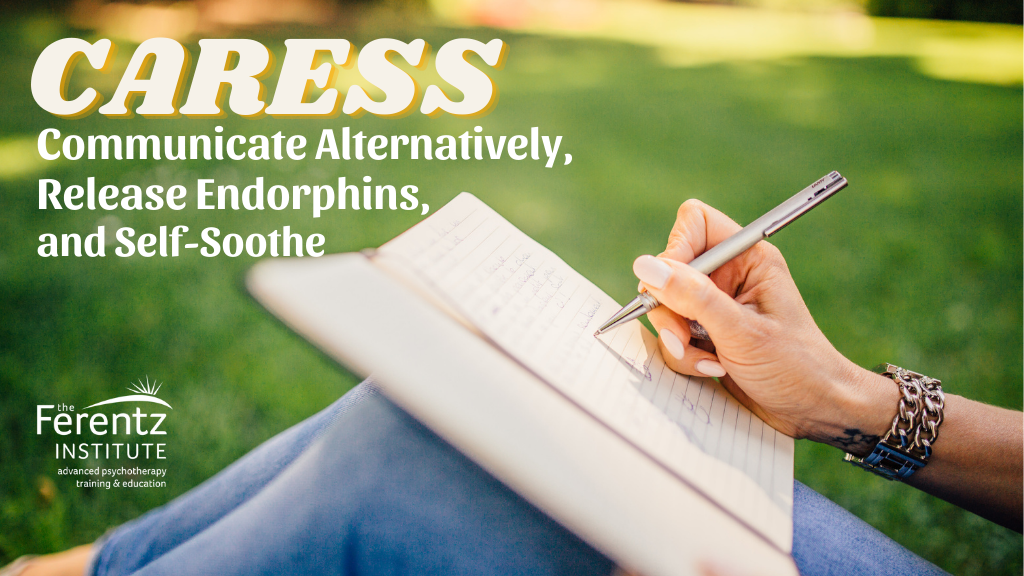
Many adolescent and adult clients with histories of trauma, abuse, neglect and other pain narratives are vulnerable to using self-destructive behaviors to self-soothe or dissociate from unresolved pain. Physical or sexual abuse survivors gravitate towards self-harm because their perpetrators have already modeled and normalized that it’s okay for their bodies to be harmed. They are picking up where their abuser left off. In addition, if a traumatized person feels “responsible” for their abuse, engaging in self-harm becomes a way to punish their own body.
Survivors of childhood abuse are not given healthy tools for comfort and coping. In the short-term, self-harm provides temporary relief from overwhelming thoughts and negative feelings. Turning to drugs, alcohol, acts of self-mutilation, eating disorders, gambling, or internet addictions can serve as a distraction and a form of self-medication. Unfortunately, in the long-term, these behaviors add more trauma and leave survivors with an increased sense of guilt, shame, and disempowerment.
Like most therapists, at the start of my career I was taught to make a self-harming client sign a safety contract. But I discovered these contracts actually created power struggles and re-enacted a victim-perpetrator dynamic by forcing client acquiescence in order to keep the therapeutic relationship. When a client discloses an act of self-harm rather than aggressively attempting to extinguish the behavior it’s our job to add to their repertoire of coping. This helps them to organically let go of destructive choices and begin to incorporate strategies that don’t lead to an endgame of shame or further emotional and physical pain.
I’ve come to believe that safety contracts are really designed to reduce the therapist’s anxiety and are not effective in treating self-harm. It’s unreasonable to ask clients to give up their destructive behaviors unless and until you give them alternative ways to cope, self-soothe, and communicate. Otherwise, treatment simply becomes a game of “whack a mole”: you may repress cutting but they will turn to drinking or over-eating instead.
In response to the realization that safety contracts don’t work I created an alternative called CARESS which stands for Communicate Alternatively, Release Endorphins, and Self-Soothe. When clients get the impulse to engage in a destructive behavior, they are encouraged to first do something under each of these three categories, setting a timer for 10-15 minutes per activity. For the CA section they can draw, journal or write a poem about their feelings. For the RE section they can engage in a safe physical activity, watch a funny video to evoke laughter, or hug a pillow or stuffed animal to release endorphins. The endpoint is always something self-soothing (SS) including: reading positive affirmations; breathwork; listening to music; using aromatherapy; or coloring a mandala.
When a client discloses an act of self-harm rather than aggressively attempting to extinguish the behavior it’s our job to add to their repertoire of coping.
By incorporating CARESS you’ve given clients meaningful things to do when they get an impulse to self-harm, rather than telling them they can’t act on their impulse. You’ve also eliminated the victim-perpetrator dynamic of telling clients they must be compliant in order to stay in treatment.
Rather than “white knuckling” the impulse to self-harm, they actively engaging in behaviors that accomplish what self-harming seeks to achieve and this dramatically reduces the need to engage in self-harm once they’ve completed CARESS.
Moving through 3 activities in 10-15 minute increments also buys clients 30-45 minutes of time to get past the initial “craving.” Additionally, the CA part of CARESS generates useful information that can be processed in therapy about the meta-communication and deeper feelings connected to their self-harm. You will also see an increase in self-compassion and empowerment when clients feel productive, gain new insights, feel more in control and have more agency about their choices. And most importantly, you will be offering clients healthier new ways to genuinely engage in self-care.
Want to learn more about CARESS and how to further incorporate it into your practice? Check out Lisa’s books: “Treating Self-Destructive Behaviors in Trauma Survivors – A Clinician’s Guide” and “Letting Go of Self-Destructive Behaviors: A Workbook of Hope and Healing.“


This is great! I love the point of helping clients feel empowered as opposed to ashamed of their behavior. The therapeutic alliance is a very important determining factor in having clients trust the clinician and move forward in the healing process. Thank you for these tools!